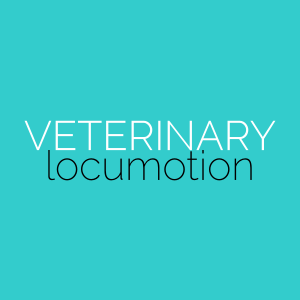
💰 Salary Transparency – Disclosure Gets Results
In the competitive environment for talent acquisition, the conversation around salary transparency has moved from a whisper to a roar. Long shrouded in ambiguity, the once-common practice of not disclosing salary details in job ads is undergoing a transformative shift. This change isn’t just about numbers; it’s about fostering trust, which leads to significant increases in quality applications.
And the trend is accelerating. The reasons are as diverse as the field itself. Growing legal mandates like those in Colorado, New York City, Japan, Latvia, and more now require salary transparency in job ads. Practices that openly disclose salary ranges are complying with emerging laws, however, more importantly, they are attracting more candidates across a diverse and talented pool of veterinarians, nurses, and technicians.
Find your next Team Member or Job…the Fresh Way
Explore how veterinary salary transparency is reshaping the recruitment and retention landscape, the challenges and triumphs practices face in implementing it, and why, ultimately, this openness is a win-win for both employers and job seekers. We unpack how disclosure is getting results for bother Employers and Job Seekers and what this means for your future…
In traditional veterinary practice environments, salaries are often hidden because it’s a game of cat and mouse trying to figure out what salary the candidate is currently on, what they’re expecting, and what the practice is willing to pay – Dr. Jane T, Multi-location Practice Owner
Knowing the expected salary upfront lets a candidate determine whether a job will be financially viable for them. It also streamlines conversations later in the hiring process. This aligns with data from a 2018 LinkedIn survey, in which 61% of respondents said compensation was the most critical part of the job description. A Glassdoor study showed similar results, with salary (67%) being the top factor jobseekers look for in ads.
Despite this, many veterinary employers still leave out compensation details in adverts, often out of fear it may put them at a competitive disadvantage or cause resentment among existing staff.
However, there is a growing global movement to make salary transparency not only a new norm but also the law. An increasing body of research shows that veterinary practices that are forthcoming about their wages can attract better, more diverse talent, making salary transparency an actionable way of creating a more equitable workplace.
Several reasons explain why only 12.6% of global companies published the pay range for a role within their job ads last year, according to a 2021 report from Seattle-based compensation data company Payscale.
Veterinary employers don’t want to publicize how much they pay, partly because it will more than likely create resentment among existing staff members who have fallen behind their market value. The real solution is to recognize and reward your existing team at market rates consistently – Dr. Laura W – Veterinary Management Consultant
In an ideal world, everyone doing the same job would make the same amount of money when they start. But that’s not always the case. In specific labor markets, veterinary employers may have to pay higher salaries to attract the best talent today vs. five years ago. This can cause internal conflict if existing employees – particularly those who started at a lower wage – could easily view that information.
If you keep compensation private, in the short term, it protects the employer and also allows the employer greater discretion to meet the market. The challenge comes later when salaries start to be compared internally among the team – Max M, Compensation and Benefits Consultant
Many veterinary employers also withhold salary information to give them more negotiation leverage with potential candidates as they advance to the latter stages of the recruitment process.
Some veterinary practices fear that if they list a salary range, all applicants will expect to receive the figure at the top end of that range, even if that figure is only reserved for the most qualified candidates. Receiving an offer at the bottom end – and accepting it – may lead to resentment right from the start.
Hesitation around salary transparency often comes from practices that lack both formal pay structures for their roles and confidence in their salary bands, often due to lack of market data – Dr. James M – ECC Hospital Director
But while some veterinary employers may remain cautious about listing pay, there’s a competitive advantage in moving towards disclosure. Veterinary practices that are more transparent about salaries clearly win over the best candidates and attract the most talented applicants.
Indeed, there is a broader trend toward more salary transparency. In Latvia, for example, a new law that came into effect in 2019 makes it mandatory to post expected salaries on all job advertisements.
Colorado became the first state in the US to enact a law similar to Latvia’s in 2021. It requires employers, including veterinary practices, to disclose hourly wages or pay ranges in all employment listings, with fines for not complying between $500 and $10,000 per violation. The law was built on new regulations in 21 US states prohibiting employers from asking applicants about their salary history. Now, several of those same US states concerned about salary history are looking to follow Colorado’s lead in making pay expectations a right for all job seekers.
While competitors use these publicly available figures to compete for talent, I think it’s primarily been a win-win for both employees and veterinary employers. Potential employees are very thankful that we show the salary because their time and effort in applying is important, and we don’t waste any of it. From our side, as well, we don’t waste our time checking resumes of people who are thinking of a higher or lower salary than we will offer – Dr. Sarah, Practice M, Colorado-based Veterinary Clinic
Moves like these have forced veterinary businesses to look at salary transparency in a fresh light. However, they’ve not been without their detractors. According to the tracking website Colorado Excluded, major non-veterinary companies such as Johnson & Johnson, Cigna, and Nike have included language in their job listings (which do not include explicit salary expectations) that explicitly prohibits workers in Colorado from applying.
I think the move toward more pay transparency will take a while to catch on, particularly for large veterinary corporations. I do see signs that the tide may be shifting as the market remains so tight. I also think there are going to be societal pressures that continue to push this, particularly in the areas of diversity, equity, and inclusion, so just doing things the way we’ve always done it isn’t going to help veterinary practices get ahead – Nicholas T – Recruitment Agency Consultant
As the push for salary transparency continues, veterinary practices that adopt these measures early can stand out as industry leaders. By being more transparent about pay structures, these practices demonstrate their commitment to diversity, equity, and inclusion, which may help them attract top talent and enhance their reputation in the field.
Since implementing salary transparency in our job ads, we’ve noticed an increase in the quality of applicants and a more diverse pool of candidates. Additionally, our conversations during the interview process are more straightforward, and both parties have a clearer understanding of expectations. But perhaps the most interesting aspect is that our salary and benefits negotiations with existing team members have also become much more transparent, and we’re actually getting mutually better outcomes there, too – Dr. Stephen L, Hospital Medical Director
The Data Says It All
In Q3 of 2023, Veterinary Jobs Marketplace reviewed all our Job Campaigns over a 90-day period. Across all locations and all roles – Veterinarian, Nurse, or Technician – Job Campaigns that disclosed a relevant and appropriate salary range received more than double the number of applications than those that did not. Conversely, not including a salary range more than halves the number of candidates that apply, and the quality is also significantly lower.
Lack of salary disclosure more than halves application numbers – Matt Lee, CEO – Veterinary Jobs Marketplace
Yes, there are challenges in implementing salary transparency, particularly when addressing potential pay discrepancies for current staff members. Proactively reviewing existing pay structures and making necessary adjustments ensures fairness and equity for all team members. Easily said, it comes at a short-term cost, but the opportunity cost of having empty consult rooms is much higher.
In Conclusion…
As we navigate the evolving landscape of veterinary employment, one thing is crystal clear: salary transparency is no longer a mere option – it’s a crucial component of modern recruitment and retention strategies. For job seekers in the veterinary field, it’s time to take a stand. By choosing to apply only for positions with transparent salary ranges, you assert the value of openness and equity in your career. This discerning approach not only ensures you align with practices that respect your worth but also drives a broader cultural shift towards transparency across the industry.
On the other hand, veterinary practices have a unique opportunity to lead by example. Embracing salary transparency isn’t just about adhering to legal requirements; it’s about positioning your practice as a forward-thinking, equitable workplace. By making transparent salaries the default rather than the exception, you not only attract a wider, more diverse talent pool but also set a standard for the industry. This shift towards openness is more than a recruitment strategy – it’s a statement of your practice’s values and commitment to fairness.
Let’s make salary transparency a cornerstone of veterinary employment. Job seekers demand the clarity you deserve. Practices lead the way in building an industry rooted in trust and equity. Together, we can reshape the future of veterinary careers, making them more inclusive, competitive, and fulfilling for everyone involved. The journey to a more transparent veterinary job market starts with each one of us. By demanding and providing clarity in compensation, we create a more empowered workforce and a more robust veterinary community.
Veterinary Locumotion is brought to you by the Team that also drives Veterinary Jobs Marketplace, the leading global veterinary jobs marketplace…
Every Veterinarian, Veterinary Nurse or Veterinary Technician can now enjoy our elegantly simple, extremely flexible and highly professional platform. Publish your Profile and post your Availabilities – from just a single day to multiple days and weeks, and up to 400 days in advance – and be instantly Matched with Locum Relief jobs and work opportunities locally, interstate or internationally.
Veterinary Employers can now enjoy our elegantly simple, extremely flexible and highly professional platform. Publish your Business Profile and post your open shift Needs – from just a single day to multiple days and weeks, and up to 400 days in advance – and be instantly Matched with Locum Relief team members locally, interstate or internationally.
And both of you will really enjoy receiving Alerts when there is a Match.
Just like Netflix, Spotify or Disney+, Veterinary Locumotion works on a simple, transparent, low-cost subscription and stamp model.
Completely transparent. No agency fees. No hourly rate markups. No complex arrangements or middlemen. No payment delays. Employers and Veterinarians, Veterinary Nurses or Veterinary Technicians deal directly with each other. No-one in between, not even us!
Discover more about our Veterinary Locum Relief Marketplace and get all of the answers to your FAQ’s here.
